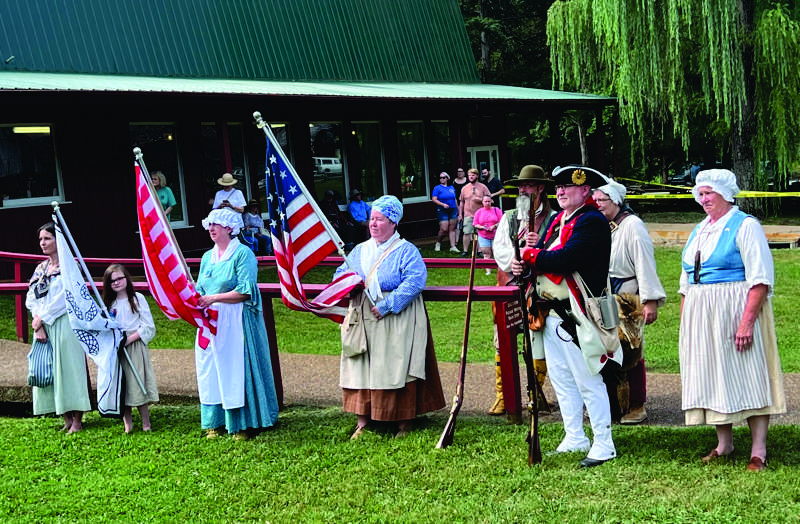Anvil blasts to mark independence

These actors were on hand on July 4, 2024, to help celebrate Independence Day at the Museum of Appalachia in Norris. (photo:G. Chambers Williams III )
As usual, an anvil shoot will take place at the top of every hour from 10 a.m. through 3 p.m. to highlight the July 4 events at the pioneer museum in Norris.
These are the museum’s equivalent of a fireworks display, using gunpower to blast 200-pound blacksmith anvils hundreds of feet into the air, all with visitors looking on from a safe distance.
“Anvil shoots were once a common way for pioneers to commemorate holidays, elections and other special occasions,” the museum says on its website.
There also will be demonstrations of Appalachian and pioneer-type activities by blacksmiths, beekeepers, dulcimer makers, spinners, weavers, rail splitters and more, the museum says.
Other activities during the daylong celebration will include a bell-ringing ceremony, a flag procession march, live Appalachian music and Southern food.
The museum’s Independence Day celebration runs from 9 a.m. to 3 p.m., and tickets are available online at museumofappalachia.com.
Admission is $20 for adults (ages 18-64); $18 for seniors (65-up), active military and first-responders; and $10 for youth (ages 6-17). Children under 6 are admitted free with a paying adult.
There is also a $50 family pass available, which covers two adults and up to six children under age 18.
Museum members are admitted free of charge.
The Museum of Appalachia, at 2819 Andersonville Highway, bills itself as “A Living Mountain Village,” and is an associate of the Smithsonian Institution in Washington, D.C.
Founded in 1969 by John Rice Irwin, the museum includes an authentic mountain farm and pioneer village, with more than three-dozen historic log structures, several exhibit buildings filled with thousands of authentic Appalachian artifacts, multiple gardens and free-range farm animals, all surrounded by split-rail fences.
There are more than 250,000 artifacts housed in three multi-story exhibit buildings; vast collections of folk art, musical instruments, baskets, quilts, Native American artifacts; and much more.

